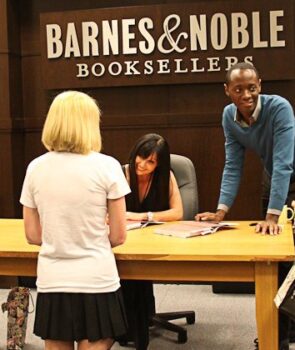Search
The Beauty of an Outline
 Recently, we’ve become sort of obsessed with outlines.
Recently, we’ve become sort of obsessed with outlines.
We attribute this recent passion to one of our authors Ron Friedman, who wrote an incredible book that was published with Simon and Schuster called Decoding Greatness. Ron is a genius outliner, outlining anything from his business plans to pitches and even simply emails. He has enlightened us to a whole new way of making the creative process far easier.
Here is Ron’s process for outlining a book proposal:
- He begins with “reverse engineering” examples of books he admires of others, the power of which he discusses in his own work;
- He sets to finding the right research to support his proposed idea;
- Then, he distills the most compelling takeaways into a list of bullet points;
- Afterward, he buckets those bullets into possible sections that would best build an argument. (The beginning portions should always be a mix of context and promise for the reader.)
- Finally, he breaks out these into possible chapters
This process is, at first, more of a “science” than an “art,” but the foundation an outline provides will give way for your writing’s creativity and beauty to shine. Ron always aims to focus on the right ideas and he has confidence that the writing will elucidate them.
Novelists can apply this logic too, but rather than being “idea” or takeaway focused, we recommend being action or drama focused. This can apply to whatever kind of fiction book you’re writing, whether it be a literary novel or thriller. An outline will give you (and agents) a sense of structure, so you can switch out or switch around chapters that don’t drive the plot forward.
A strong outline might look something like this:
Victoria Aveyard, author of the bestselling novel Red Queen, uses a three-act, eight sequence structure—an outlining skill she learned in film school.
For her, this consists of two sequences in Act I, four sequences in Act II, and two sequences in Act III. In Act I, an inciting incident separates the two sequences, with the first sequence representing the “status quo.”
Act II comprises the bulk of the story and is split in the middle, called the midpoint—where the story hinges. The end of Act II is the low point and it catapults the reader into Act III. During the low point, the protagonist is at their lowest state, all hope seems lost, and the story is at its darkest.
Act III is when the characters reunite, hope is renewed, and the final fight begins—whatever that looks like for your novel!
Perhaps this type of outlining may or may not work for you, but the trick is to find something that helps make your writing flow and, most importantly, sing.
An outline can be used in your query letter, in a pitch to publicize your book for media or endorsements, and so much more. Even Lucinda’s newsletters begin with an outline! So do most of our company documents, which allows for a basic structure that team members can then customize to make their own.
Do you use outlines for your own work? Do you have examples that could be instructive to other writers? Please share with us on Instagram!








